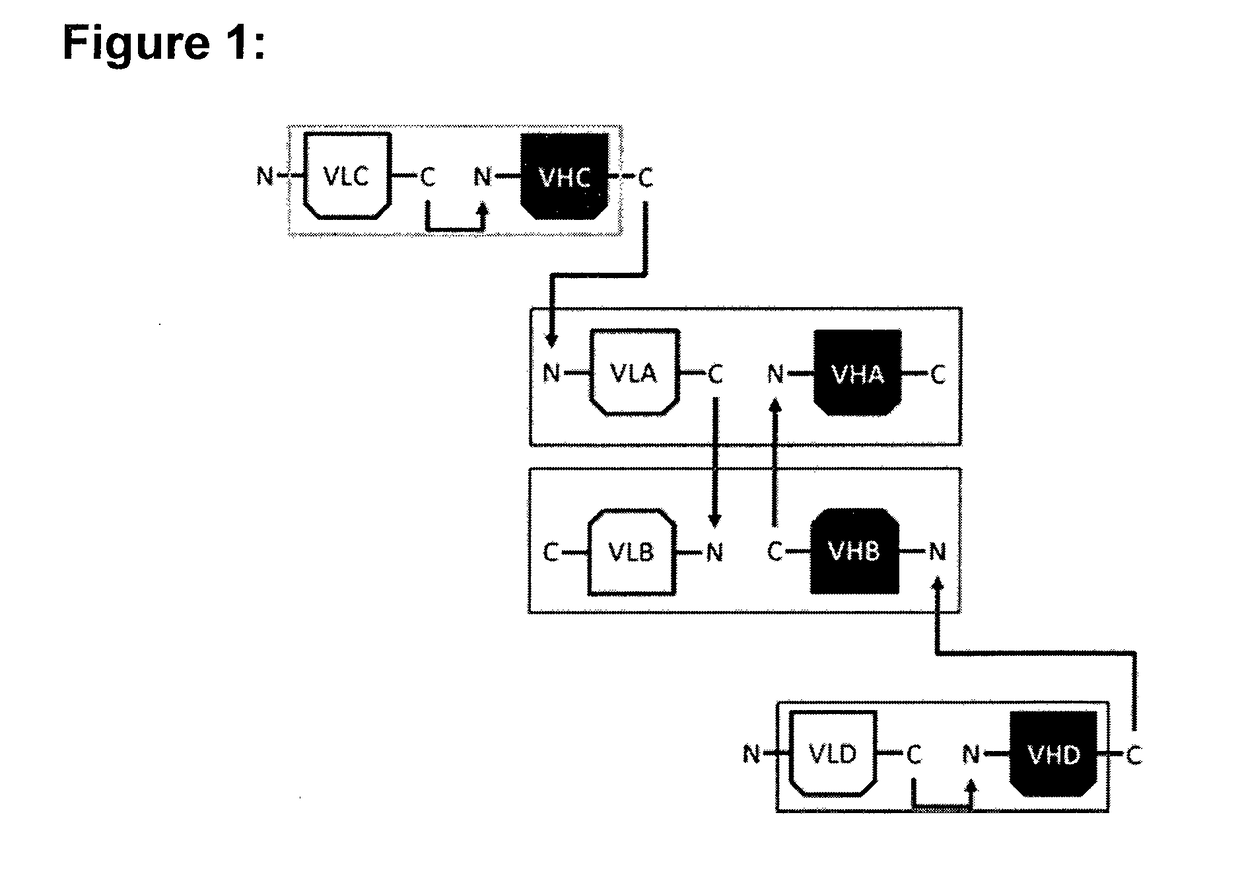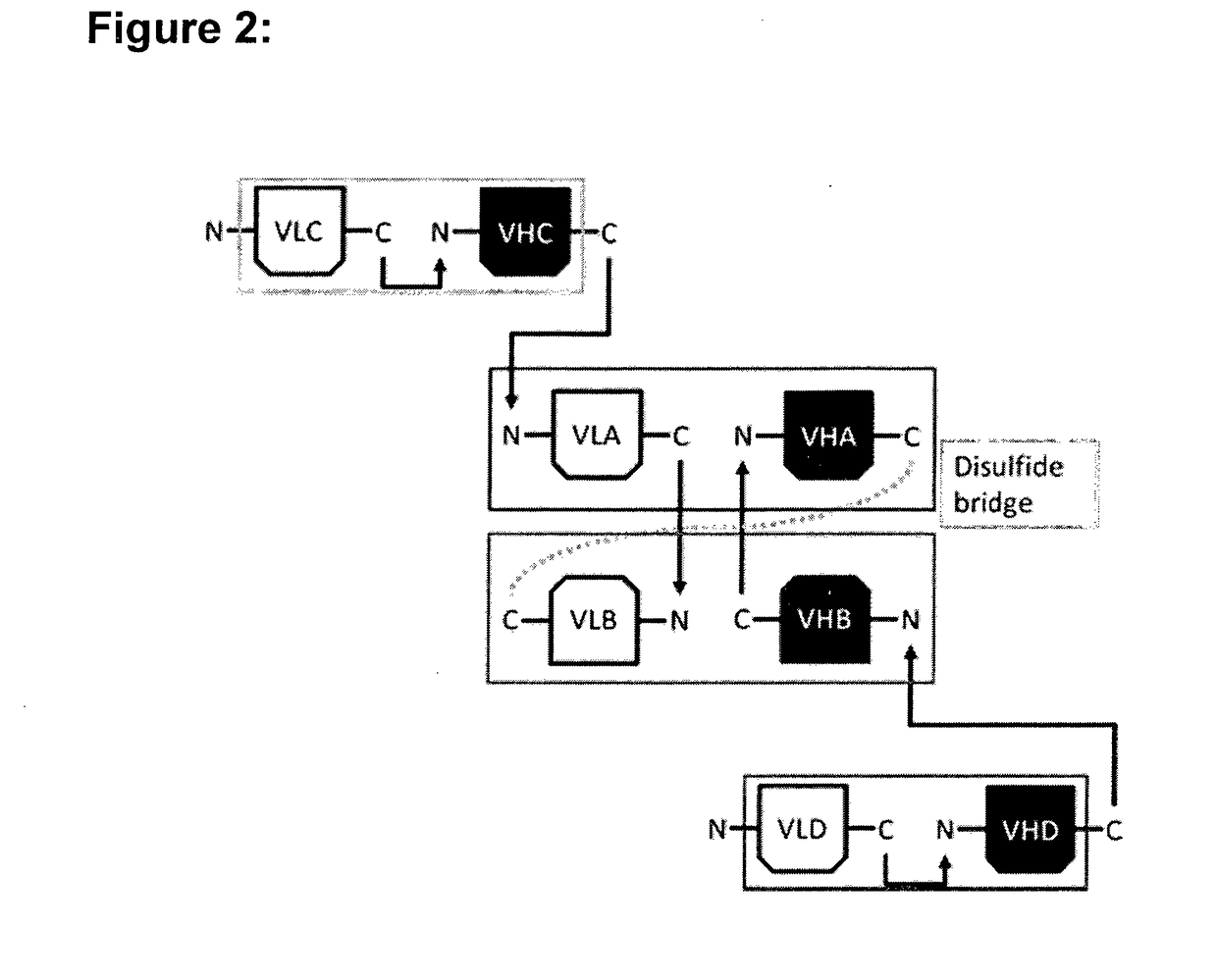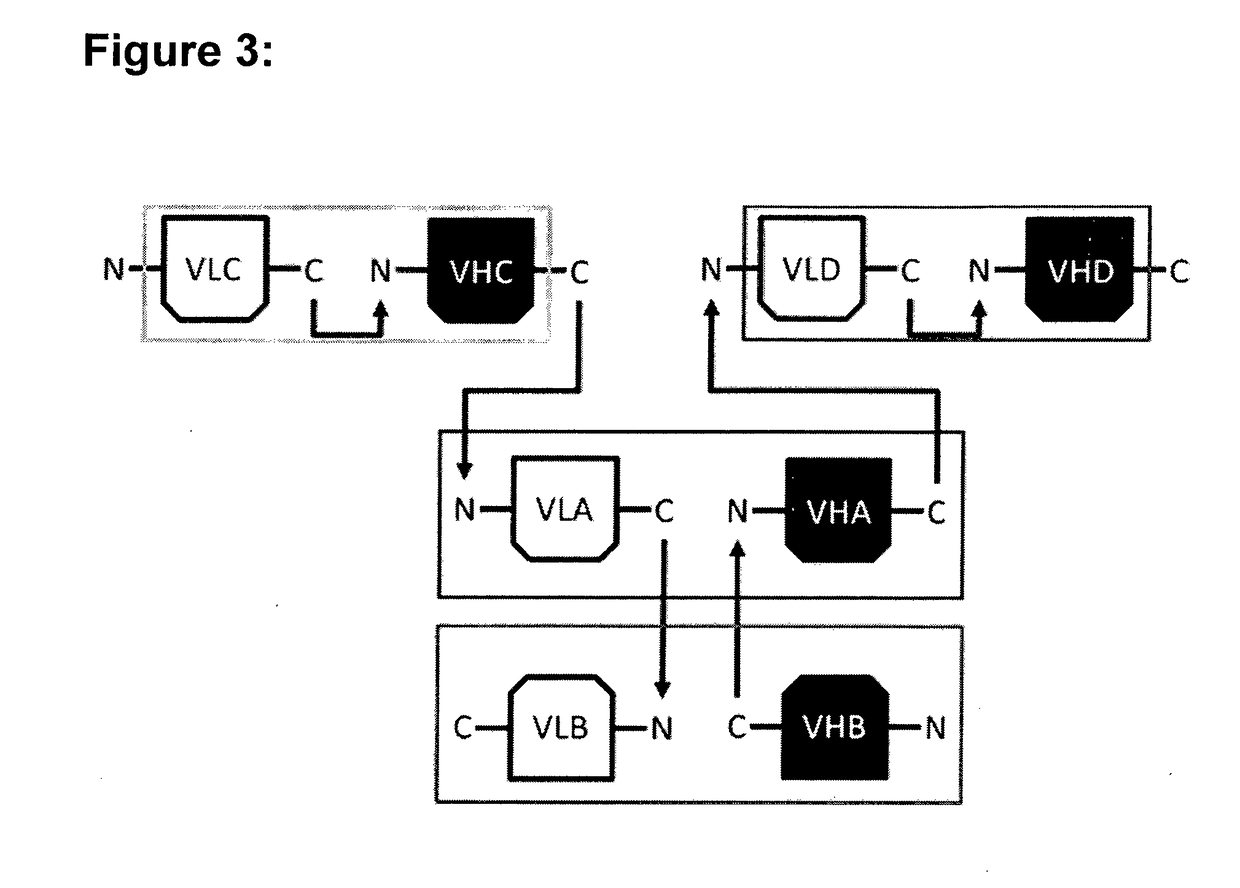Hetero-dimeric multi-specific antibody format
a multi-specific, heterodimeric technology, applied in the field of heterodimeric multi-specific format of multiple antibody variable domains, can solve the problems of unsuitable for pharmaceutical development, little flexibility, and considerable technical challenges in the industry
- Summary
- Abstract
- Description
- Claims
- Application Information
AI Technical Summary
Benefits of technology
Problems solved by technology
Method used
Image
Examples
example 1
ion of Multispecific Formats
[0154]For the construction of the hetero-dimeric multi-specific formats that were named multispecific antibody-based therapeutics by cognate hetero-dimerization (MATCH), four well characterized variable domains were chosen that are directed against human tumor necrosis factor alpha (TNF), human interleukin-5 receptor (IL5R), human CD3 epsilon (CD3) and interleukin-23 receptor (IL23R), respectively. Based on the known binding characteristics of the respective variable domains in the scFv format, the activity and thereby correct association of cognate VL / VH pairs was assessed in the context of the multi-specific molecules. The respective variable domains in the periphery of the molecule were either located at the amino (N)-terminus or the carboxyl (C)-terminus of each protein chain as single-chain Fv (scFv) fragments, or located in the hetero-dimerization core domain. In contrast to the peripheral scFv fragments for which the VL and VH were positioned on th...
example 2
n and Purification
[0159]The expression of the multispecific format assemblies was performed by co-transfection of the constructs into a suspension cell line (e.g. CHO-S Freestyle™, Invitrogen) by using a transient gene expression protocol (FreeStyle™ MAX system). The combination of the co-expressed expression vectors for the generation of the multispecific format assemblies is outlined in Table 2. After cultivation for several days the supernatant of the antibody fragment secreting cells was recovered for purification. The protein was captured on a suitable affinity resin (e.g. Capto L, GE Healthcare), washed extensively and eluted by a pH shift. The eluted protein was neutralized and buffer exchanged to yield the purified pools. The proteins were analyzed by size-exclusion high-performance liquid chromatography (SE-HPLC) (Table 3 and FIG. 5) and sodium dodecyl sulfate polyacrylamide gel electrophoresis (SDS-PAGE) (FIG. 6) for purity and UV / Vis spectroscopy for protein content. The ...
example 3
tability Assessment
[0161]Efficient MATCH chain dimerization was further demonstrated by the remarkable homogeneity of the protein content in protein L-purified samples. The protein was analyzed over the course of four weeks and storage at 4° C. and 37° C. with respect to oligomerization by SE-HPLC and degradation by SDS-PAGE (see FIGS. 7 to 9). Prior to the study the sample concentration was adjusted to 1 g / L and t0 time points were determined. The monomer content was quantified by separation of the samples on a Shodex KW-402.5-4F (Showa Denko) and evaluation of the resulting chromatograms. For the calculation of the relative percentage of protein monomer the area of the monomeric peak was divided by the total area of peaks that could not be attributed to the sample matrix. The protein degradation was assessed by SDS-PAGE analysis with Any kD Mini-Protean TGX gels (Bio-Rad Laboratories) and stained with Coomassie brilliant blue. The protein concentration was monitored at the differe...
PUM
| Property | Measurement | Unit |
|---|---|---|
| dissociation constant | aaaaa | aaaaa |
| dissociation constant | aaaaa | aaaaa |
| dissociation constant | aaaaa | aaaaa |
Abstract
Description
Claims
Application Information
 Login to View More
Login to View More - R&D
- Intellectual Property
- Life Sciences
- Materials
- Tech Scout
- Unparalleled Data Quality
- Higher Quality Content
- 60% Fewer Hallucinations
Browse by: Latest US Patents, China's latest patents, Technical Efficacy Thesaurus, Application Domain, Technology Topic, Popular Technical Reports.
© 2025 PatSnap. All rights reserved.Legal|Privacy policy|Modern Slavery Act Transparency Statement|Sitemap|About US| Contact US: help@patsnap.com



